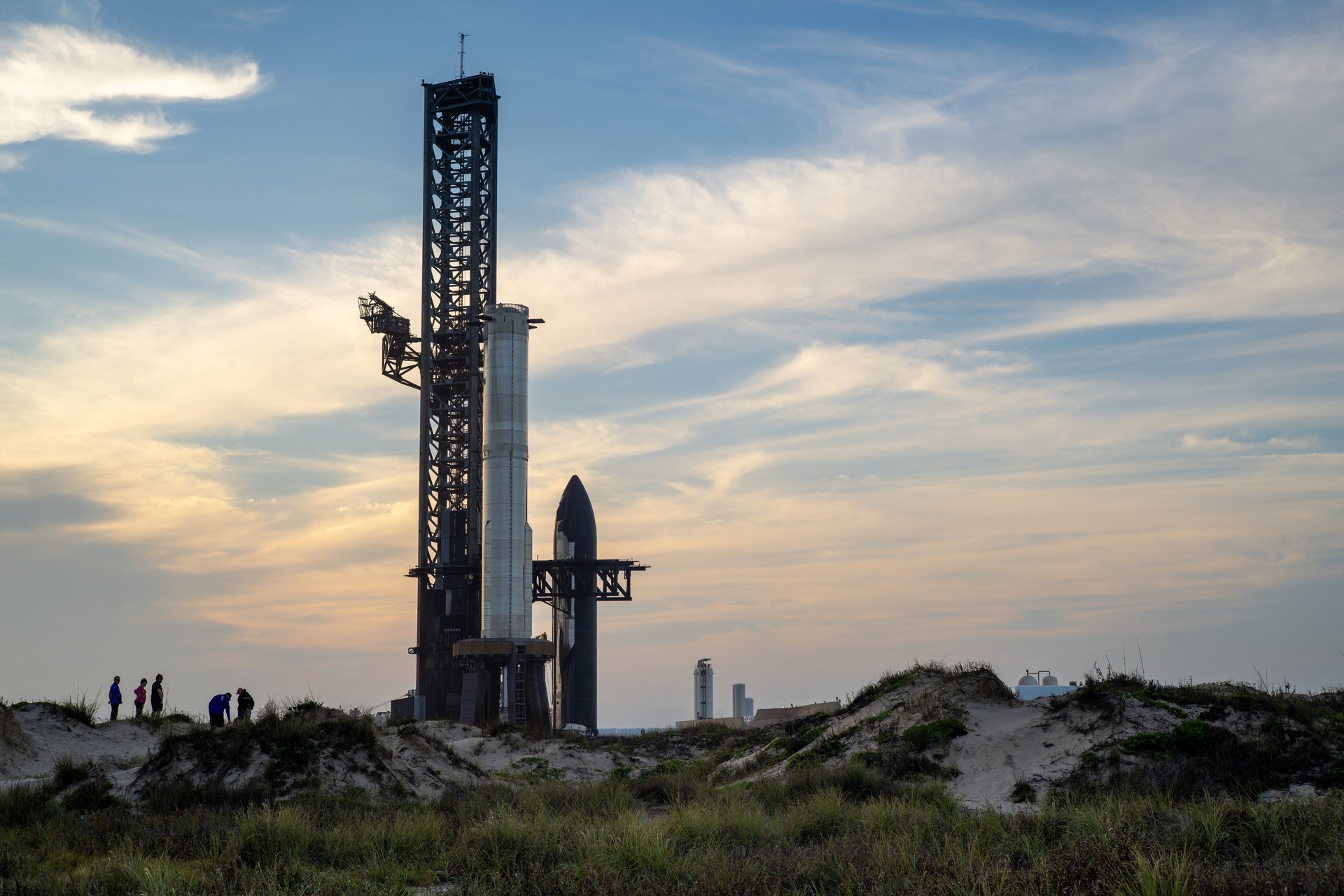SpaceX's Starship had another catastrophic failure
The explosion was just the latest in a growing series of failures for Elon Musk's SpaceX Starship.

Brandon Bell/Getty Images
SpaceX’s rocket may be built to go to Mars — but for now, it can’t seem to make it through Earth’s atmosphere in one piece.
Suggested Reading
SpaceX’s Starship rocket erupted in flames during a routine engine test late Wednesday night, the latest in a growing series of failures for Elon Musk’s spacecraft. The blast lit up the night sky in South Texas and sent debris flying on the company’s Starbase test site near Brownsville. It was the fourth Starship to be lost this year alone.
Related Content
Musk’s reaction? Breezy: “Just a scratch,” he posted on X.
SpaceX said that “all personnel are safe and accounted for” and that it is now “working with local officials to respond to the explosion and safe the site.” The company asked residents not to approach the area while operations continue.
SpaceX said the rocket experienced a “major anomaly” during a static fire test at about 11 p.m. local time. Preliminary data suggests a pressurized nitrogen storage unit — a COPV (or composite overwrapped pressure vessel) — may have failed. “If further investigation confirms that this is what happened, it is the first time ever for this design,” Musk wrote on X.
The explosion occurred while the rocket wasn’t even flying. It was simply sitting on a test stand, undergoing routine checks before a future launch. The fact that it detonated before liftoff — twice, based on footage showing back-to-back explosions — only deepens concerns about the program’s reliability, especially as the U.S. government continues to pour billions into the company’s ambitions.
The incident is the latest in a string of high-profile Starship failures that have raised fresh questions about the rocket’s viability and its central role in NASA’s Artemis program, which aims to return American astronauts to the Moon by the end of the decade. Starship, when fully assembled with its Super Heavy booster, is the most powerful launch vehicle ever built, standing 400 feet tall with 39 total engines. It’s also SpaceX’s most ambitious and complex vehicle, designed to be fully reusable and capable of interplanetary travel. Musk has long talked about wanting to colonize Mars.
But for all of SpaceX’s — and Musk’s — futuristic promise, the reality has so far been grim.
In January, a Starship vehicle broke apart mid=flight just minutes after launch, scattering debris across Caribbean islands. Two months later, in March, another launch failed when the rocket lost control and exploded before completing key reentry maneuvers.
Then in May, SpaceX’s most promising launch to date made it deeper into the flight plan — but still ended in a fiery demise. The Starship successfully launched and separated from its booster, but during reentry, it lost control and disintegrated high in the atmosphere. The Federal Aviation Administration later identified a hardware failure in one of the engines as the probable cause.
All three of those missions were full-stack flights intended to test the rocket’s ability to lift off, separate, survive reentry, and execute controlled landings — milestones that will be critical if the vehicle is ever to carry astronauts to the moon or Mars. But with each attempt ending in disintegration, the project’s timetable appears increasingly tenuous.
SpaceX has emphasized that early failures are part of the iterative testing process and has previously bounced back from catastrophic setbacks, including the 2016 Falcon 9 explosion at Cape Canaveral and a 2019 test-stand explosion involving the Crew Dragon spacecraft. In both cases, the company identified the root causes and returned to flight within months.
But Starship is far more complex, and the stakes are higher.
NASA has awarded SpaceX more than $4 billion to develop a crewed lunar lander version of Starship and is depending on the company to deliver a functional vehicle in time for a planned Artemis landing as early as 2026. The rocket also needs to prove it can refuel in orbit — a technically daunting task that’s never been accomplished — before it can begin serious lunar or Mars missions. Still, Musk recently claimed that SpaceX will hit $15.5 billion in revenue this year.
The political landscape surrounding SpaceX is also growing more fraught. Earlier this month, Musk clashed publicly with President Donald Trump, who threatened to cancel SpaceX’s federal contracts. Musk fired back by threatening to withhold NASA’s access to the International Space Station via the company’s Dragon capsule — a threat he later walked back, but not before rattling nerves in Washington.
That dispute has reportedly prompted U.S. officials to urge other commercial space providers, such as Jeff Bezos’ Blue Origin, to accelerate their crewed lunar lander programs to reduce dependence on SpaceX. Blue Origin’s Blue Moon lander isn’t scheduled for crewed missions until later this decade, but the company was awarded a NASA contract in 2023 after losing the initial bid to SpaceX in 2021.
SpaceX says it’s reviewing data from Wednesday’s explosion and will “apply lessons learned” to future testing. But after four failures in six months, the lessons are starting to pile up.
And so are the questions.